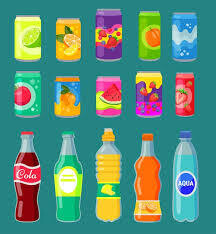Disclaimer [ENGLISH]
Disclaimer : This material is for educational purposes only. You, the reader, as...
What is diarrhea?
- Watery, loose stools happening three or more times per day.
- One or two loose stools can be normal due to a change in diet.
- Diarrhea is a common illness for children.
- It is common for children under 4 to have diarrhea one to two times per year.
- Common causes include:
- Infections. Usually from a virus. Sometimes other infections.
- Food intolerance, food allergy, or food sensitivity.
- Drinking a lot of juice, soda, or other sweetened drinks.
- Antibiotics can cause loose stools. This is a common side effect, not an allergic reaction.
- Uncontrolled anxiety or recurrent high stress levels can cause diarrhea.

What are the symptoms of diarrhea?
- In addition to frequent, watery stools your child might experience the following gastrointestinal symptoms:
- Abdominal pain, bloating or increased gas.
- Blood or mucus in their stool.
- Decreased appetite. Increased thirst.
- Depending on what is causing the diarrhea, your child might also experience
- Fever.
- Fatigue, increased tiredness, decreased activity level.
- Vomiting.
- Rash
What is the treatment for diarrhea?
- Anti-diarrhea medications are not recommended. They can be dangerous for children.
Hydration is the most important.
- Avoid juice – it can cause more diarrhea.
- Continue breastfeeding or formula.
- Electrolyte drinks (such as Pedialyte) provide another option.
- For infants under 2 months check with your provider.
- For infants 6 months and older water can be given.
- Electrolyte drinks (such as Pedialyte) provide another option.
- For toddlers:
- Encourage lots of water.
- Electrolyte drinks (Pedialyte) provide another option.
- For school-aged kids and teens:
- Encourage lots of water.
- Electrolyte drinks provide another option.
Dairy products like milk may increase diarrhea.
- This is usually temporary.
- Yogurt is the exception, as it can be helpful in giving beneficial bacteria back to the belly.
- For those in diapers, be sure to change diapers regularly and apply a thick layer of barrier cream with each diaper change.
How do I prevent my child from having diarrhea?
- Keep your child up to date with vaccines.
- Encourage frequent hand washing.
- Avoid sick contacts.
- Clean high touch surfaces regularly.
- Avoid sharing food, drink, or utensils.
- Avoid unpasteurized products or contaminated foods.
- Limit or avoid sweetened drinks as a regular part of your child’s diet.
When to call your child’s provider:
- Your child’s symptoms are getting worse, or your child is having severe abdominal pain.
- You cannot keep your child hydrated.
- Your child is urinating less than 3 times every 24 hours.
- Your child has a fever for five days.
- Your child has blood in their stool.
- Your child has a rash with the diarrhea.
- Your child has diarrhea for 14 days (about 2 weeks).
- You have noticed your child has diarrhea with a specific food/drink or food group.
- Your child is having trouble breathing.
- You think your child symptoms might be related to anxiety or uncontrolled stress.
- You think your child needs to be seen.
This publication was adapted from information within American Academy of Pediatrics Patient Education Handouts, UpToDate Guidelines and Healthychildren.org
Reviewed by: TT D.O, AR D.O. | 01/2024


